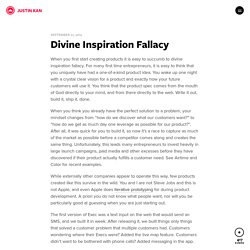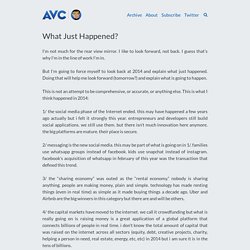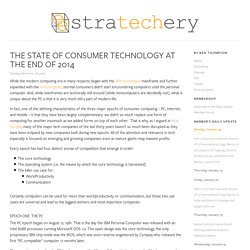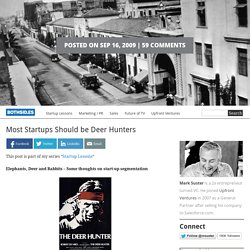

Divine Inspiration Fallacy. When you first start creating products it is easy to succumb to divine inspiration fallacy.

For many first time entrepreneurs, it is easy to think that you uniquely have had a one-of-a-kind product idea. You wake up one night with a crystal clear vision for a product and exactly how your future customers will use it. You think that the product spec comes from the mouth of God directly to your mind, and from there directly to the web. Write it out, build it, ship it, done. When you think you already have the perfect solution to a problem, your mindset changes from “how do we discover what our customers want?” While externally other companies appear to operate this way, few products created like this survive in the wild.
The first version of Exec was a text input on the web that would send an SMS, and we built it in week. Do the bare minimum to prove your hypothesis. How to Get Startup Ideas. November 2012 The way to get startup ideas is not to try to think of startup ideas.

It's to look for problems, preferably problems you have yourself. The very best startup ideas tend to have three things in common: they're something the founders themselves want, that they themselves can build, and that few others realize are worth doing. Microsoft, Apple, Yahoo, Google, and Facebook all began this way. Problems. What Just Happened? I’m not much for the rear view mirror.

I like to look forward, not back. I guess that’s why I’m in the line of work I’m in. But I’m going to force myself to look back at 2014 and explain what just happened. Doing that will help me look forward (tomorrow?) And explain what is going to happen. This is not an attempt to be comprehensive, or accurate, or anything else. 1/ the social media phase of the Internet ended. this may have happened a few years ago actually but i felt it strongly this year. entrepreneurs and developers still build social applications. we still use them. but there isn’t much innovation here anymore. the big platforms are mature. their place is secure.
What Is Going To Happen. The State of Consumer Technology at the End of 2014. While the modern computing era in many respects began with the IBM System/360 mainframe and further expanded with the minicomputer, normal consumers didn’t start encountering computers until the personal computer.

And, while mainframes are technically still around (while minicomputers are decidedly not), what is unique about the PC is that it is very much still a part of modern life. In fact, one of the defining characteristics of the three major epochs of consumer computing – PC, Internet, and mobile – is that they have been largely complementary: we didn’t so much replace one form of computing for another insomuch as we added forms on top of each other.1 That is why, as I argued in Peak Google, many of the major tech companies of the last thirty years haven’t so much been disrupted as they have been eclipsed by new companies built during new epochs.
Every epoch has had four distinct arenas of competition that emerge in order: Epoch One: The PC. Presentation: mobile is eating the world. Requests for Startups. Introduction.

Full stack startups. Many of today’s most exciting startups were tried before in a different form.

Suppose you develop a new technology that is valuable to some industry. The old approach was to sell or license your technology to the existing companies in that industry. The new approach is to build a complete, end-to-end product or service that bypasses existing companies. Prominent examples of this “full stack” approach include Tesla, Warby Parker, Uber, Harry’s, Nest, Buzzfeed, and Netflix. Most of these companies had “partial stack” antecedents that either failed or ended up being relatively small businesses. Bad product experience. The full stack approach lets you bypass industry incumbents, completely control the customer experience, and capture a greater portion of the economic benefits you provide. Andreessen Horowitz shares the 16 tech trends it's most excited about. Most of us will never be in an Andreessen Horowitz meeting, and even fewer of us will get a chance to work with the famed VC firm.

But today, we’re all equals when it comes to getting a peek at the 16 tech trends that a16z, as it’s known, is most excited about right now. In a post this morning, Andreessen Horowitz, perhaps Silicon Valley’s most revered group of investors, shared its “16 Things” list, a breakdown of the hottest tech trends in the world right now. And while few of those things would individually surprise anyone with any tech savvy, it’s fascinating to see a16z codify the trends that it clearly believes are most changing the world today. “We don’t invest in themes; we invest in special founders with breakthrough ideas,” Andreessen Horowitz wrote in the post.
Most Startups Should be Deer Hunters. This post is part of my series “Startup Lessons“ Elephants, Deer and Rabbits – Some thoughts on start-up segmentation Nearly all of the mistakes I made at my first company I fixed by the time of my second company.

This is the only mistake I repeated twice and it is a mistake that I see many, many companies make.